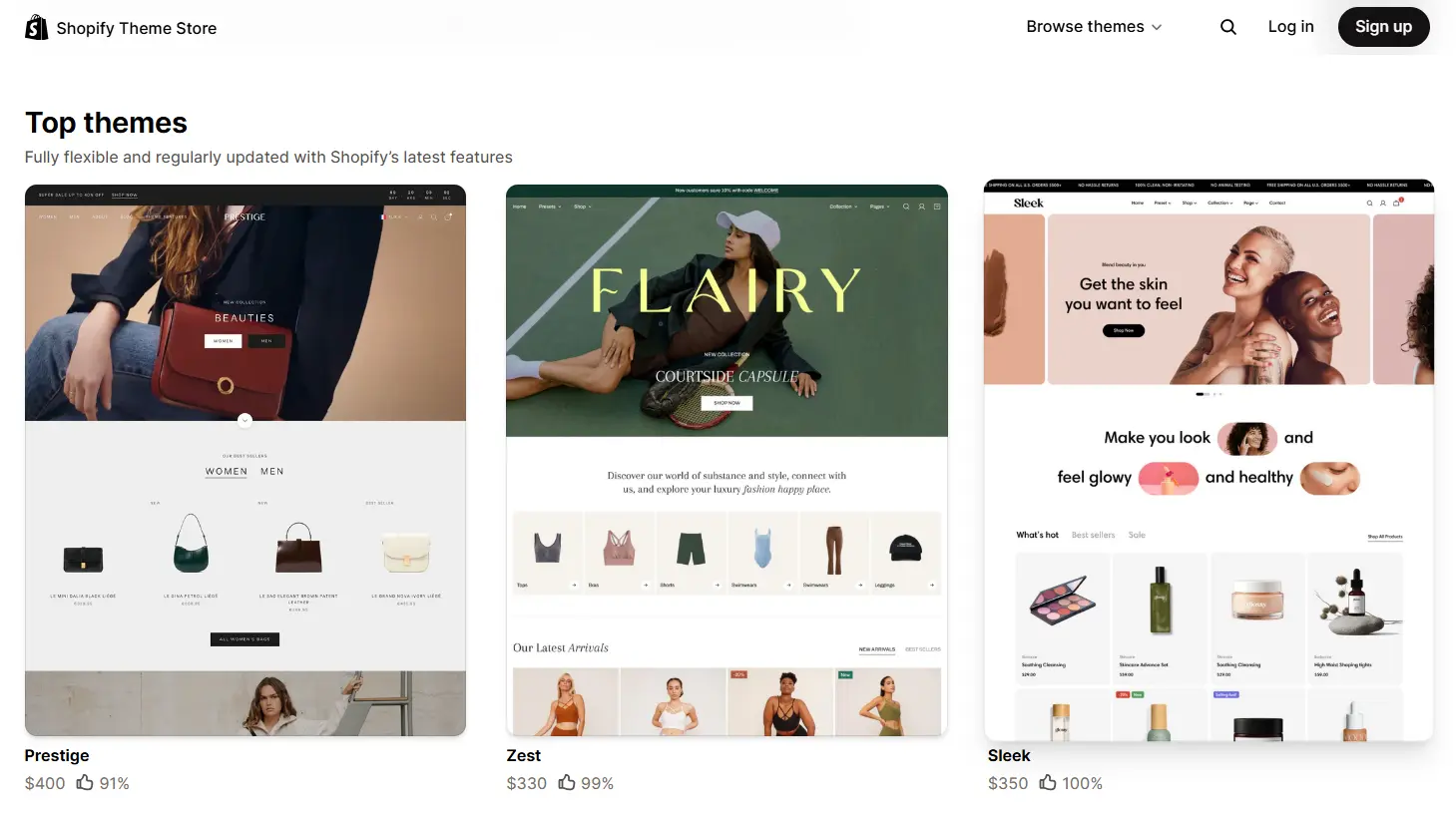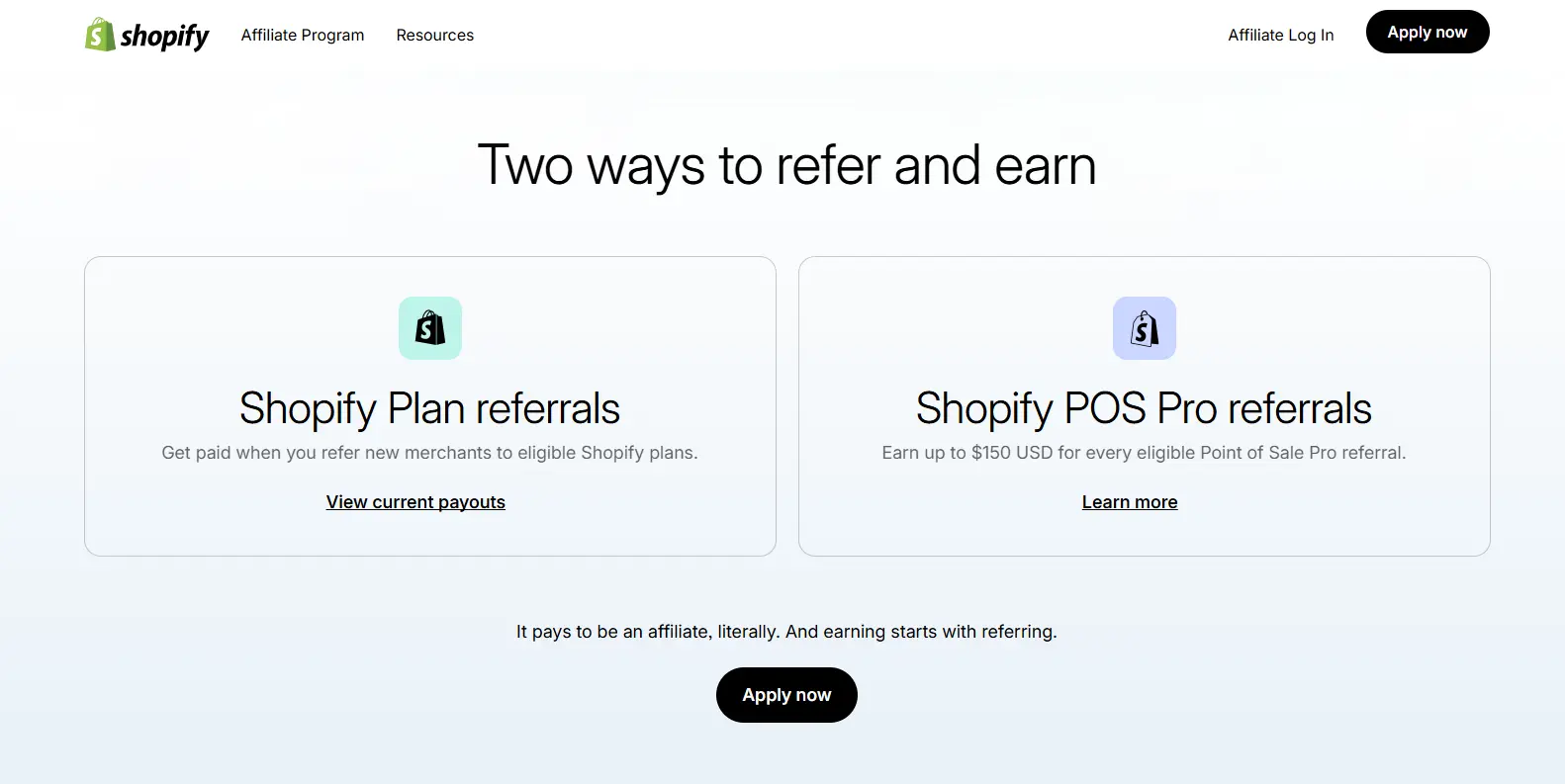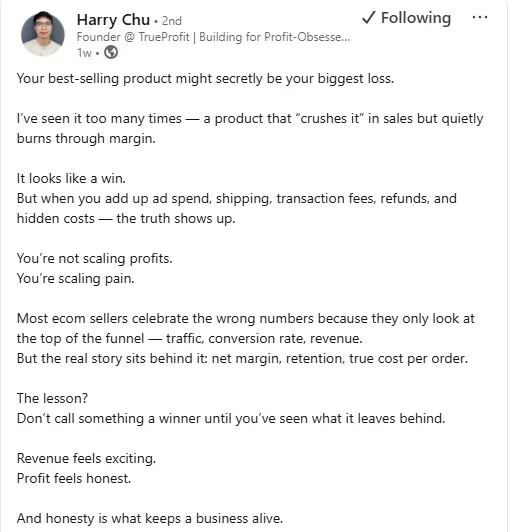How to Make Money on Shopify: 9 Ideas That Work

Shopify is full of ways to make money online. Whether you open stores or develop an app, there's always a path for literally everyone here.
In this guide, we’ll walk you through 9 most potential ideas to start in 2026. If you pick the right strategy and stick to it, you can turn your idea into a steady income stream.
9 Proven Ways to Make Money on Shopify in 2026
1. Launch Your Own Shopify Store
The most common way to make money on Shopify is by selling your own products. It could be literally anything: handmade jewelry, fitness gear, digital templates, e-books and more ideas go on.
Shopify is widely-used across ecommerce because it delivers the easiest setup and management experience. A merchant with zero code knowledge can literally get a store up and running in around a day or so.
The best part is, Shopify works perfectly for small businesses but can also scale as your store expands. Their app store has up to 8,000+ apps, both paid and free, which lets merchants add extra functions easily such as marketing automation, upsell service, shipping delivery, profit analytics, etc, without a broken system. That's why, in 2026, Shopify still ends up being the go-to platform for most ecommerce entrepreneurs despite all the alternatives floating around.
While launching a Shopify store is simple, making money on that store isn't as easy as people make it seem.
If there are three key lessons from top stores for you as beginners, they’d be:
- Test store ideas first. Get it lean, build a simple landing page, run a few Facebook or TikTok ads, and collect sign-ups for a waitlist. If people show real interest (clicks, signups, comments), you’ve got an idea worth scaling.
- Focus on profitability. Buy, price, and sell with profit margin always in mind. Whether you make money from the first order or over the lifetime value of customers, your goal should be to generate sustainable profit, not just sales volume.
- Open to mistakes. What's crazy about starting your own Shopify business is that you can learn all the right stuff and still get it wrong in the real-life store. So take that first small step—without quitting your 9-to-5 or stable income right away—stay patient, data-driven, and open to learning.
2. Start a Dropshipping Business
Dropshipping is a retail business model where merchants sell products online without holding inventory. When a customer places an order, the merchant forwards it to a supplier, who then packages and ships the product directly to the customer’s door.
It’s one of the lowest-risk, easiest-to-start business models for aspiring eCommerce entrepreneurs. On average, beginners can earn $5K in monthly income, and if you stick with it and get experienced, hitting $10K to $50K+ per month isn’t uncommon.


Till this day, millions of dropshippers worldwide choose Shopify over alternatives since it's easy to use, quick to set up and the pricing is beginner-friendly—making it ideal for new dropshippers testing the market.
Another advantage is Shopify’s comprehensive dropshipping network. Merchants can find shipping partners, fulfillment services, payment gateways and third-party apps that automate everything from sourcing to order tracking in their dropshipping stores.
But to run a successful dropshipping store, there are a few important realities to understand:
First, dropshipping still requires upfront capital. A realistic starting budget ranges from $3,000–$10,000, mostly spent on product costs, advertising, and shipping fees.
Second, it’s not a get-rich-quick scheme. Many dropshippers earn less than their previous salaried jobs during the first couple of years. Contrary to what dropshipping scammers are promoting, dropshipping is a long-term growth strategy, not an instant route to wealth.
Third, don’t treat dropshipping as the life-long business model because it’s never been. Heavy reliance on third-party suppliers makes it difficult to build a sustainable brand in the long term. While it’s ideal for testing products with minimal upfront costs, most merchants eventually transition to white-label or private-label products to create a recognizable brand—a smarter and more scalable approach in eCommerce.
3. Sell Print-on-Demand Products
Print-on-demand is technically a form of dropshipping, but it deserves a different spot as POD sellers face unique pros and cons.
In POD, merchants sell custom products without holding stock. The difference from standard dropshipping is that merchants add their own design to the product they want to sell such as clothing, accessories, or home decor. When a customer places an order, the product is printed, packed, and shipped by a third-party print-on-demand service such as Printiful or Printify.
Merchants love POD because it combines the benefits of dropshipping—no inventory, low costs, fast launch—all while allowing sellers to test different designs.
Designs are your main edge in POD but also your biggest challenge. It’s not that you need to be a designer yourself, but if you have a strong idea and can’t turn it into an appealing design, hiring a professional is essential. Don’t just copy trending “funny cat designs” or best-selling patterns you see online—that approach rarely works.
For sale platforms, most POD stores usually fall into two groups: Etsy sellers and Shopify store owners.
Etsy conveniently lets newbies sell quickly thanks to its internal traffic, but being there means merchants don’t really “own” their site. Their POD stores are on just another listing in a crowded marketplace.
Shopify, on the other hand, gives merchants complete control over their store's domain, email list, branding, site layout, customer experience, literally everything—except instant traffic. Here, merchants must actively drive visitors via ads or free strategies like community seeding. But it's not necessarily a con of Shopify, it's more like a new path that will naturally pay off if done right.
4. Build and Sell Online Courses
Instead of physical products, you can totally sell online courses in your Shopify store. Courses can cover almost any topic such as business, marketing, photography, coding, health, or personal development.
However, despite low overhead and less complex logistics, the online course market is crowded, and your course needs to offer something unique—meaning you’re truly an expert in something, whether it’s your personal experience, a fresh teaching method, or actionable strategies.
Marketing is another key factor. Unlike physical products that can sell on impulse, courses require trust. It takes way longer to offer a free course first, then invest heavily on SEO and demonstrate your expertise through blogs, social media, or webinars. Ultimately, you can start making money after proving your quality of course to potential students.
5. Design and Sell Shopify Themes
For those skilled in web design, creating Shopify themes is a high-potential way to make money. This approach lets you monetize your design or coding skills by creating ready-made themes that merchants can use to set up their stores quickly and professionally.
Paid themes typically sell anywhere from $200 up to $500, depending on the features and customization options.


However, as a solo designer, you’re not only fighting for attention in a crowded market but also competing with Shopify itself. With 800+ paid and free Shopify themes already available, the biggest challenge here is to create unique options that Shopify's default themes don't fully cover.
6. Develop Shopify Apps
As of 2025, there are millions of active Shopify merchants worldwide, all looking for tools to automate and improve performance for their stores. Apps that solve their real problems are always in demand.
Moreover, Shopify actively supports developers with resources, documentation, and an open API to create apps that integrate seamlessly into merchants’ stores.
Shopify also runs the Shopify App Store, which gives developers a platform to reach a global audience. This makes app development not only possible but potentially very profitable for those who can solve real merchant problems.


Successful Shopify apps usually focus on solving specific merchant pain points including SEO tools, performance tracking, analytics dashboard, upsell & cross sell service, loyalty programs management, product recommendations, automated content generation, or personalized email campaigns.
As always the key is to identify a gap that merchants frequently experience and build a solution that is easy to use, reliable, and adds real value.
7. Join the Shopify Affiliate Program
The Shopify Affiliate Program is a simple way to make money by referring new merchants to Shopify. Best of all, it’s completely free to join.


As an affiliate, you earn a commission every time a new merchant purchases a full-priced Shopify store plan through your unique referral link. Shopify tracks your referrals throughout the sign-up process, so you get credited for every qualified sign-up.
The program is open to anyone with an audience of merchants at any stage of their business journey. That said, not every application is approved, as Shopify prioritizes quality and relevance.
This program works best for owner websites, creators with an established audience, anyone who creates original content focused on commerce or entrepreneurship, or individuals with experience using Shopify or other eCommerce platforms.
8. Become a Verified Shopify Expert
Shopify merchants often need help with tasks they either don’t have the skills for or don’t have time to do themselves. By becoming a verified expert, you can charge for high-value services and earn a steady client base.
Top high demand services for those merchants include marketing & advertising, conversion optimization, store troubleshooting, etc,... By helping them out, some Shopify experts earn $100–$500 for small projects, while seasoned experts with strong recurring customers can make $5,000–$10,000+ per month. Full-time agencies or highly specialized experts can even exceed that.
That said, the hardest challenges are always personal branding since merchants often hire based on trust and reputation. You need to market yourself effectively, and it might take a long time to start having your very first client.
Shopify has a community where you can freely create a profile and promote yourself to their merchants. From there, you can make connection by actively answering queBy actively answering questions from other merchants or potential customers, it’s one of the easiest ways to get started and build credibility.
9. Provide Product Photography Services for Shopify Merchants
Merchants, especially those with hundreds of SKUs, often need help shooting, editing, and producing visuals that showcase their products in the best light. By offering this as a service, you can charge per product, per batch, or even on a monthly retainer, making it a consistent income stream.
Many worry that AI tools have drastically reduced the need for product photographers, but that’s mostly true only for merchants who prefer free or low-cost options.
AI can be helpful, but it isn’t a complete replacement. There’s still strong demand for skilled product photographers who can deliver accurate, polished, and trustworthy images, because customers want to see exactly what they’re buying — not mockups, not low-quality AI-generated visuals.
Top 10 Best Selling Products on Shopify
If you’re planning to start an eCommerce store, here are 10 of the best-selling products to consider for 2026:
- 5-1 full body shaver
- Newborn training pants baby shorts
- Vintage crochet set
- Kids sonic clean auto-toothbrush
- Automated toilet bowl cleaner
- Quick release belt
- Healing tool “tuning fork” set
- Rotator burn machine
- Electric cordless rotary tool kit
- Portable air cooling fan
While these top-selling products are popular across Shopify and may remain high-performing in 2026, their success in your store depends more on how you promote them than the product itself. And even if they sell the most, that doesn’t guarantee they’re your most profitable items.
Harry Chu, the founder of TrueProfit puts it well: “Your best-selling product might secretly be your biggest loss. When you add up ad spend, shipping, transaction fees, refunds and other hidden costs, that’s when you truly understand if a product is profitable or secretly burning through your margin”.
Final Thoughts
Shopify gives you more than just a storefront — it’s an entire ecosystem for creators, freelancers, and entrepreneurs to build income from multiple streams. Whether you sell products, build apps, or offer services, there’s room to grow.
If you’re wondering how to make money on Shopify, the key isn’t luck — it’s strategy. Focus on value, brand trust, and long-term relationships with your customers or clients, and Shopify can become a powerful platform for financial independence.
Harry Chu is the Founder of TrueProfit, a net profit tracking solution designed to help Shopify merchants gain real-time insights into their actual profits. With 11+ years of experience in eCommerce and technology, his expertise in profit analytics, cost tracking, and data-driven decision-making has made him a trusted voice for thousands of Shopify merchants.




 Shopify profits
Shopify profits





